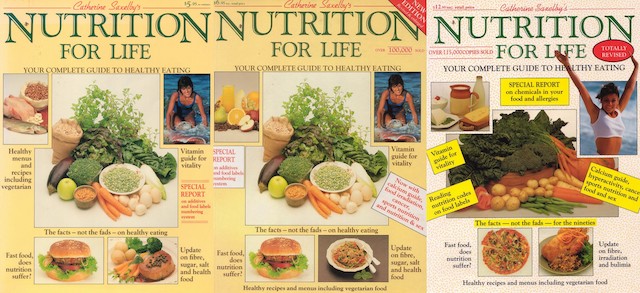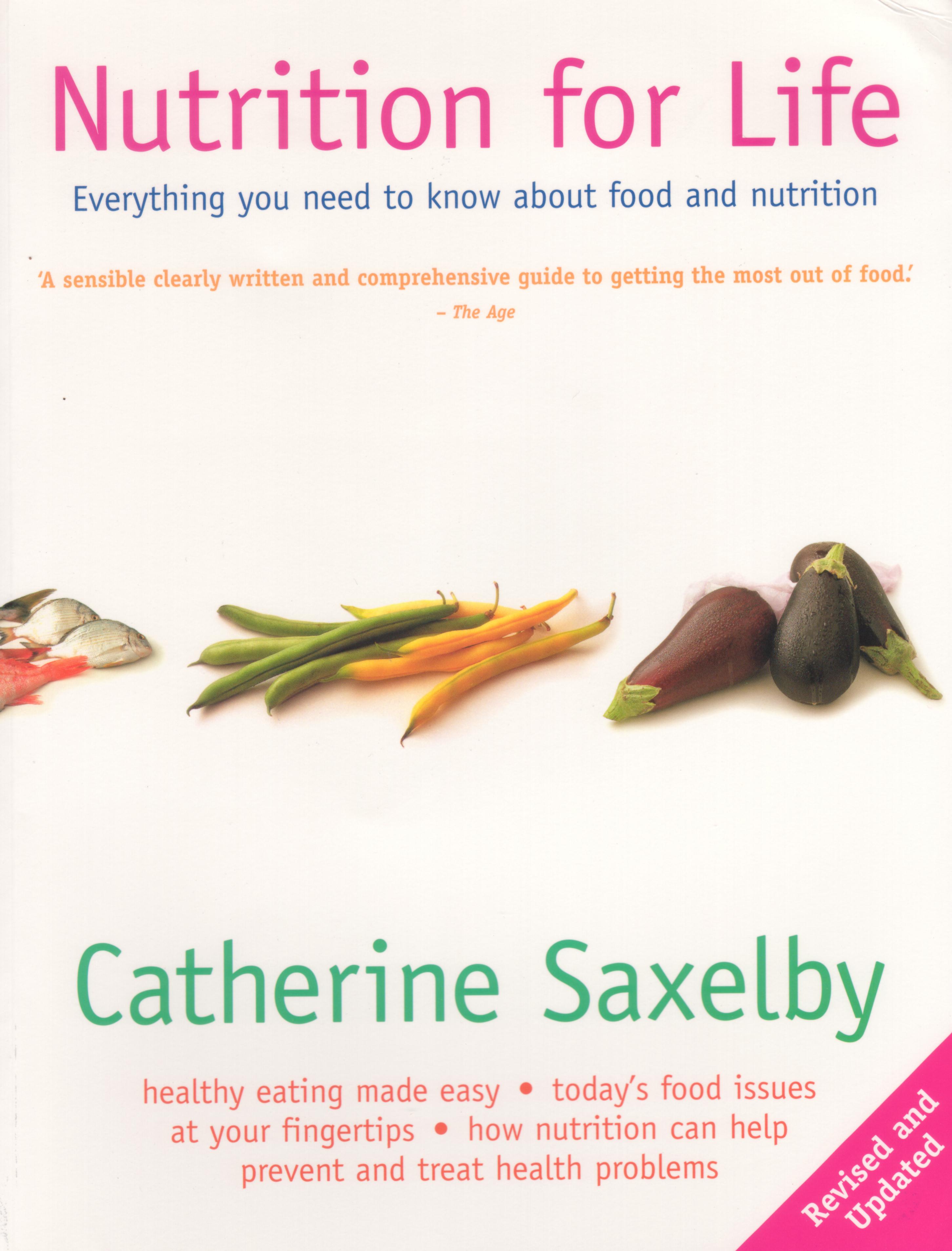Dietitian as author
Written by Catherine Saxelby
on Friday, 27 July 2018.
Tagged: health, healthy eating, healthy lifestyle, nutrition, wellness, writing

Books just don’t appear out of thin air. While I published my first real book “Nutrition for Life” in 1986 I had been writing for ages before that. Here’s the story behind that success and how I came to write nutrition books that are practical, realistic and free of fads and hype.
Background to that first book, Nutrition for Life
I had always wanted to write a “mook” or magazine-book but without the diet at the front then the chocolate cake recipes at the back.
My first book “Nutrition for Life” evolved from a series of magazine articles and covered a whole range of disparate topics from ethnic eating (think Vietnamese fare or Italian food) to omega-3s and everything in between.
I put in a proposal to Reed Books and they took a punt, even though I was an unknown author. I was very, very lucky. They paid for great colour photography and design as well as the usual editing and typesetting (in those days). It was first distributed through newsagents as a “one-shot” and quickly sold like hotcakes. There was little else out there to compete. It was priced at a tiny $5.95 - which now seems so cheap! Later it evolved to become more bookish and was sold through book shops and chain stores like Target and Big W.
Nutrition For Life sold amazingly well, selling out its first print-run of 40,000 copies. I think it was due to the sound sensible nutrition advice that any dietitian would approve such as cut back on your salt and sugar, eat more vegetables, be portion wise, etc. Plus it had great colour photos and magazine-style headings and layout. And at $5.95 was priced the same as other magazines so it was a no-brainer to buy.
Reed quickly printed another print-run and another. We then did a second edition with fresh new material and new photography and later a third edition, where I revised everything.

The downturn – into the doldrums
 Unfortunately, as in many other sectors of the publishing world, Reed was sold off and swallowed up into a bigger company and disappeared. Eventually I was picked up by Hardie Grant Books where many of the ex-Reed employees had banded together to create an independent Australian publishing house.
Unfortunately, as in many other sectors of the publishing world, Reed was sold off and swallowed up into a bigger company and disappeared. Eventually I was picked up by Hardie Grant Books where many of the ex-Reed employees had banded together to create an independent Australian publishing house.
It was a good move for me. With Hardie Grant, other books followed - Eating for the Healthy Heart, Foodwatch A to Z, Everyday Diet Secrets and the Zest Cookbook, co-authored with the Food Director of Woman’s Day magazine Jennene Plummer.
Over the years, I also worked as a consultant on a number of other nutrition books including Super Food Ideas cookbooks, Eating Smart for a Healthy Heart (for Readers Digest), the Magazine Editor’s Diet (for ACP now NOW Media), the Ancient Grains cookbook (Arbon) and an Australian adaptation of the UK book Family Nutrition (Dorling Kindersley/Penguin).
Publishing books and my profile as a dietitian
 It’s often said that ‘a book opens doors’ and this was certainly true for me. Being a published author, especially with a best seller, helps you get noticed by magazine editors, food manufacturers and government agencies alike.
It’s often said that ‘a book opens doors’ and this was certainly true for me. Being a published author, especially with a best seller, helps you get noticed by magazine editors, food manufacturers and government agencies alike.
While it hasn’t made me rich nor smoothed the long tedious process of writing original pieces, it’s been a worthwhile venture. For me, writing has always been, and will always be, solitary and hard.
6 tips for budding writers
Here’s what I’ve learned through writing 13 books as well as writing regularly for magazines and newspapers:
- Hone your skills. Take a course in professional writing for freelancers or in non-fiction writing.
- Don’t get sucked into believing there is such a thing as ‘writer’s block’. If you have regular deadlines, it’s amazing how these quickly sharpen your skills and clear away any block effectively.
- Start small. You can’t write a big book until you’ve mastered smaller articles or blogs. Pen a blog, an article for a local paper, a patient handout or a contribution to a bigger work.
- Write regularly. Getting practice in writing in your chosen subject area is all-important. There’s no short-cut. It’s like muscle memory. Ask any journalist. You’ll get better and better. And faster and faster.
- Make sure you know your topic. Really well. Aim to be the expert in that niche.
- Finish what you start. Writers are well known for their ability to procrastinate and leave things half-written (I have drawers full of posts half started!). Don’t let this be you!
 More on writing tips here
More on writing tips here
You may also be interested in...
Foodwatch
The Good Stuff
The Boring Stuff
© 2025 Foodwatch Australia. All rights reserved
Website by Joomstore eCommerce




